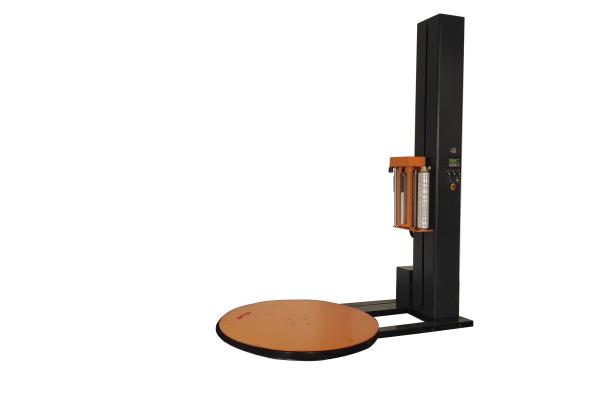I. Packaging Requirements 1. Load Capacity Select an appropriate wrapping machine based on the maximum weight of the palletized goods to be wrapped. Generally, the maximum weight of the goods should be less than 80% of the pallet wrapping machine's load capacity to ensure stable operation and extend the equipment's service life. 2. Packaging Dimensions Choose a wrapping machine that adapts to the size of the pallet. Ensure the turntable diameter of the wrapping machine meets the packaging requirements of the goods to avoid issues such as failed packaging or poor wrapping effects. Considering the distance between the turntable and the film rack bracket, it is acceptable to select a turntable diameter slightly smaller than the pallet's diagonal during configuration. However, since the pallet corners extend beyond the turntable, operators must pay attention to safety, maintain a distance, and avoid injuries caused by collisions during operation!!! 3. Cargo Height Select a wrapping machine that adapts to the overall height of the pallet plus goods. The height of the goods must not only be less than the effective height of the wrapping machine but also consider the minimum wrapping height of the machine. According to the standards of common wrapping machines in the market, the minimum height of the wrapped goods should be no less than 50 cm. 4. Packaging Speed Choose a wrapping machine with a suitable packaging speed based on production efficiency requirements. If the cargo flow on the production line is high, a high-speed wrapping machine is required to improve packaging efficiency and meet production needs. II. Performance Characteristics 1. Wrapping Mode Wrapping machines have two wrapping modes: semi-automatic and fully automatic. - Semi-automatic wrapping machines require manual assistance for film loading and cutting, but the wrapping process is automatic, suitable for medium-output packaging needs. - Fully automatic wrapping machines can achieve automatic film loading and cutting, effectively improving production efficiency. Equipped with remote controls, they reduce personnel workload and are suitable for large-scale production. 2. Film Rack System Different film racks have different stretching methods: resistance stretching and pre-stretching. The pre-stretching film rack system is more stable and ensures better packaging quality. A high-quality film rack system should accurately control the film tension and feeding speed to ensure the film is evenly wrapped around the goods. Meanwhile, the lifting and rotating mechanisms of the film rack should operate smoothly for easy operation and maintenance. 3. Control System An advanced control system enables the setting of multiple wrapping modes, allowing precise control of parameters such as the number of wraps, wrapping speed, and film stretching ratio. Some high-end wrapping machines also feature fault diagnosis and automatic alarm functions, facilitating timely problem detection and resolution to enhance equipment reliability and stability.
